History
Louis XIIi and Versailles1607 - 1638

The young Dauphin – the future Louis XIII – came to Versailles for his first hunting trip on 24 August 1607. He discovered a forest and meadows with plenty of game, which also pleased his father, Henry IV. According to Héroard, however, the doctor who recorded the visit, the Dauphin did not return until 1617. Crowned king in 1610, he next came in 1621, and his liking for the location only grew stronger. Ideally situated between his principal residence at Saint-Germain-en-Laye and Paris, it was surrounded by woods that were noisy with pheasants, boars and stags. In late 1623 the king decided to build a small hunting lodge where he could stay the night and which he first used in June 1624. It was a small country residence and, according to the Maréchal de Bassompierre, “a mere gentleman would not have been overly proud of the construction.” Louis XIII decided to rebuild it in 1631. Construction continued until 1634 and laid the basis of the Palace we know today. The king also bought part of the fiefdom of Versailles in 1632.
Find out more about the origins of the Palace
These two small palaces, whose architectural style was neither distinctive nor particularly fashionable, were royal residences of leisure. Despite this seemingly humble role, it was here that the Day of the Dupes, a major event in the history of the French crown, culminated in November 1630. The king rarely invited guests here and, although the second palace contained apartments for the queen, Anne of Austria never slept in theme because her husband, the king, always ensured she had transport back to Saint-Germain or Paris... Besides the pleasures of hunting, Versailles also constituted a location to retreat to, where the king would come in search of solitude, notably after his relationship with his platonic mistress, Mlle de La Fayette, ended in 1637.
The reign of Louis XIV1638 - 1715
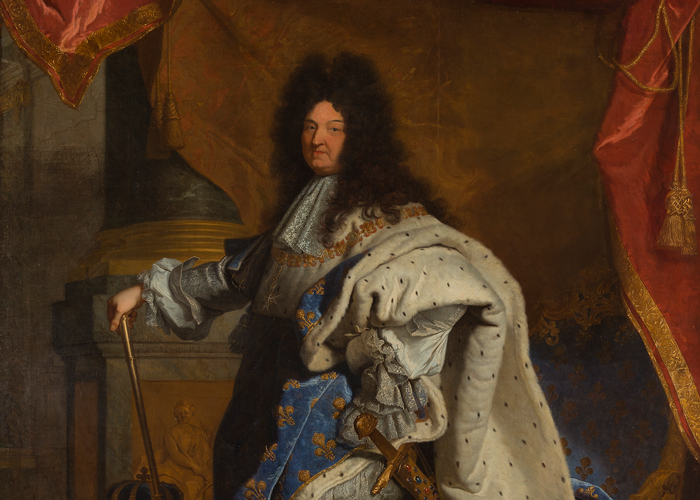
The history of Versailles is inextricably linked with the figure of Louis XIV. Although the location existed for centuries before the sovereign, Louis XIV developed a genuine liking for Versailles early on, and decided to extend it beyond the chateau that had grown out of the hunting lodge of brick and stone first built by his father. The King, who could see great things for the chateau and the forests around it, took on the role of architect himself, and built a masterpiece with which he would forever be associated.
The future Louis XIV first came to Versailles in October 1641, when his father Louis XIII sent him and his brother here to escape a smallpox epidemic that had reached the Palace of Saint-Germain-en-Laye. He was just three years old and it is doubtful that he remembered this first visit; his next known visit was in 1651, when, now Louis XIV, he “indulged in the pleasure of hunting”, according to an edition of Gazette de France on 18 April. He was accompanied by his governor and was received for dinner by the Captain of the Palace, René de Longueil, Marquis of Maisons. From then on the young king often found his way back to the chateau, accompanied by his brother, his mother Anne of Austria, and Cardinal Mazarin. He became so fond of the place that, in 1661 shortly after the death of his First Minister, he undertook major works on it. Thereafter, until the end of his life in 1715, the Palace and estate saw a constant stream of building projects, notably including the forecourt in 1662, the “Le Vau Envelope” in 1668-1670, the Pavilions of the Secretaries of State in 1670-1671, the South Wing in 1679-1681, the Grand Commun in 1681-1684, the North Wing in 1685-1689, and the Royal Chapel in 1699-1710.
Find out more about the reign of Louis XIV
The residence gradually went from being a hunting lodge to a residence for leisure that saw grand parties and entertainment held in the gardens (such as the ones in 1664, 1668 and 1674). From 1682 it became the main residence of the French Court and government. Louis XIV moved not only the aristocracy to Versailles, but also the main body of administration. Here, he was primus inter pares amongst the prominent figures of the time, who would spend fortunes on any chance to maintain their position, and who could manage all his policies. King Louis XIV, who loved the outdoors and open spaces, saw much to benefit from in carrying out construction work here and made his palace an expression of power and authority, knowing that glory was conveyed not only by war but also by buildings. The location played host to prestigious ceremonies, such as the reception of grand ambassadors in the Hall of Mirrors, the Doge of Genoa in 1685, the ambassadors of Siam in 1686, and the embassy of Persia in 1715. Likewise, it was in Versailles in November 1700 where he accepted the will of Charles II of Spain, which named his second grandson as king of Spain.
When Louis XIV died his palace and estate were far from finished. Nevertheless, over 50 years and after nearly 100 million Livres, he had laid all the foundations, and it was now up to his successors to improve, modify and bring them into line with modern tastes.
The reign of Louis XV1715 - 1774
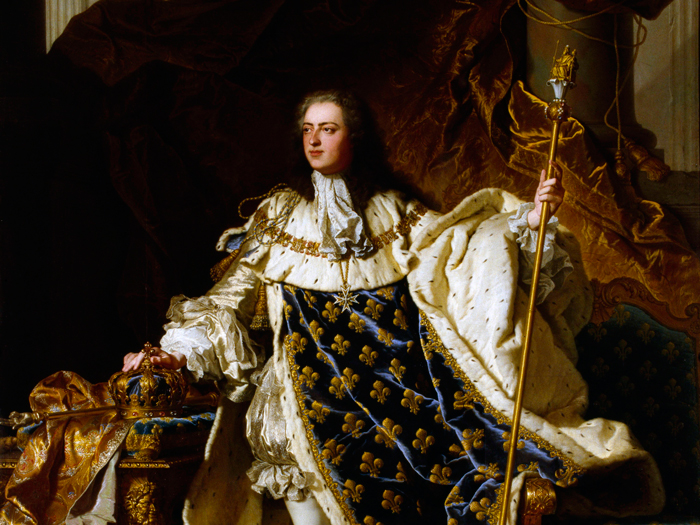
Following the death of Louis XIV in September 1715, the court abandoned Versailles for Vincennes and transplanted itself briefly to Paris the following December. Versailles entered a long period of neglect. The Governor of the estate ensured that the Grandes Eaux Fountain Display was activated every fortnight to keep it in working order. The Palace was merely a source of curiosity, and Tsar Peter the Great visited twice between May and June 1717. It was not until 15 June 1722 that, at his own request, the young Louis XV returned to Versailles. His first concern was to complete the work of his great-grandfather, but he also set out to create more intimate and private spaces in which to perfect his knowledge. His timidity led him to increase the number of small chambers in which he felt more at ease than in the grand public spaces created by Louis XIV. Although respectful of the place, Louis XV did not live exclusively in Versailles but often resided at Fontainebleau, Marly and Compiègne, as well as in palaces further away from the seat of power, such as Choisy, La Muette, Saint-Hubert and Bellevue.
Find out more about the reign of Louis XV
During his reign, however, the Palace underwent major work both inside and outside, including full refurbishment of his apartments, demolition of the Ambassadors’ Staircase, and construction of the large theatre, the Royal Opera House, which had been started by Louis XIV. It was at Versailles that Damien made an assassination attempt on his life in 1757, and where Mozart performed as a child prodigy. When he began suffering from the first symptoms of smallpox in Trianon, Louis XV was immediately moved to Versailles, where he died on 10 May 1774.
The reign of Louis XVI 1774 - 1793
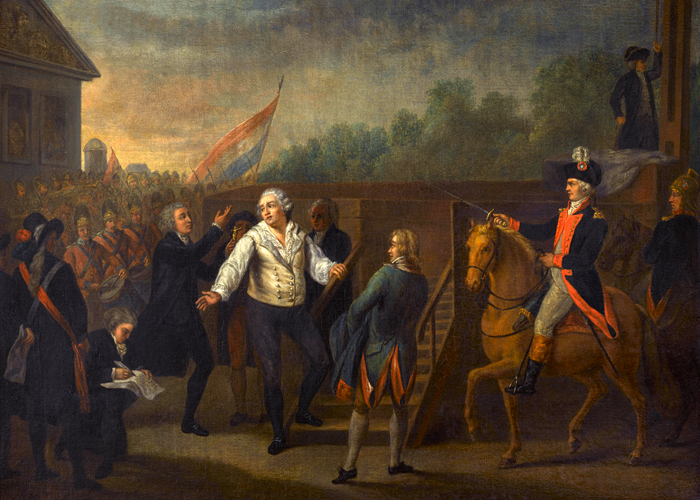
Born in Versailles like his grandfather, Louis XVI became king before the age of twenty. The celebration of his marriage to the Archduchess of Austria Marie-Antoinette in 1770 at the Royal Opera House was one of the greatest events to take place in Versailles in the late 18th century. Unlike his grandfather, Louis XVI spent most of his time in Versailles, where he embarked on several projects for the interior, while devoting himself – in his private chambers – to studying various sciences that he particularly liked. He was very fond of his wife and in 1774 he offered her the Petit Trianon, built by Louis XV for Mme de Pompadour and first lived in by Mme du Barry, and Marie-Antoinette made it her private domain. A shy but studious king, Louis XVI was interested in international politics and played an important role in the War of American Independence.
Find out more about the reign of Louis XVI
While there was a constant succession of festivals and entertainment in Versailles, it was now in Paris that the courtiers spent most of their time, often leaving Versailles rather empty… Some events helped break the monotony and recall the splendours of bygone times, including the visit by Emperor Joseph II to see his sister, and the first hot air balloon flight. But the sovereigns were rapidly losing popularity, not only among the people but also among the nobility, as a result of heavy taxes and Marie Antoinette's extravagant expenses. It was in the midst of this that the Affair of the Diamond Necklace occurred in 1785, in which the queen was actually blameless... Failing to see clearly the social and economic situation, Louis XVI, who merely wanted to be loved, and Marie-Antoinette, who loved luxury, were undoubtedly at a loss to explain the events of 5 and 6 October 1789 which forced them to leave Versailles for a final journey to Paris…
Versailles and The French Revolution 1789 - 1803

Revolutionary poster.
© Château de Versailles, Dist. RMN / © Christophe Fouin
Far from having been pillaged by a rampant mob as might be imagined, the Palace of Versailles came through the period of the French Revolution relatively unscathed, even though some would not have minded seeing such a key symbol of the monarchical system laid to waste.
Find out more about Versailles and the French Revolution
The King’s Buildings service took advantage of the departure of the royal family for the Tuileries on 6 October 1789 to begin repairs that would have been rather awkward to carry out in the presence of the Court, such as restoring the ceiling paintings in the Hall of Mirrors. The fall of the monarchy in August 1792 ushered in a period of uncertainty, even though the Convention had decreed that the maintenance of the former royal residences devolved to the nation.
Both during and for some time after this period, there was a question over the use of areas that had been partly appropriated, usually on a temporary basis, for other uses such as arms manufacturing, which went on in the South Wing before moving to the Grand Commun buildings.
Nevertheless, two decisions that were to have significant consequences for the palace were taken just after the fall of the Ancien Régime.
In August 1793, the Central Museum for the Arts opened in Paris, to the detriment of Versailles. The initial stock comprised collections of paintings and sculptures belonging to the Crown, while works that had decorated the State Apartments or that had been kept in the stores of the "Surintendance des Bâtiments" were transferred to the Louvre. The sculptures that decorated the Gardens of Versailles were not involved in the move, however. Objections raised by the municipality and the Department only served to slow the process down but were unable to prevent the removal of masterpieces that had featured in all guides of Versailles published before the French Revolution.
In another development, a law passed on 10 June 1793 stipulated the disposal of all the contents of the former palaces of the Crown, apart from “works of art and science”. All of the furniture and furnishings concerned that had not accompanied the royal family to the Tuileries or had not been sent to the Furniture Store-House or requisitioned for various services were sold off over the course of almost a year, between 25 August 1793 and 11 August 1794. No fewer than 17,182 lots were on offer, the vast majority of which were acquired by Paris merchants and “citizens”.
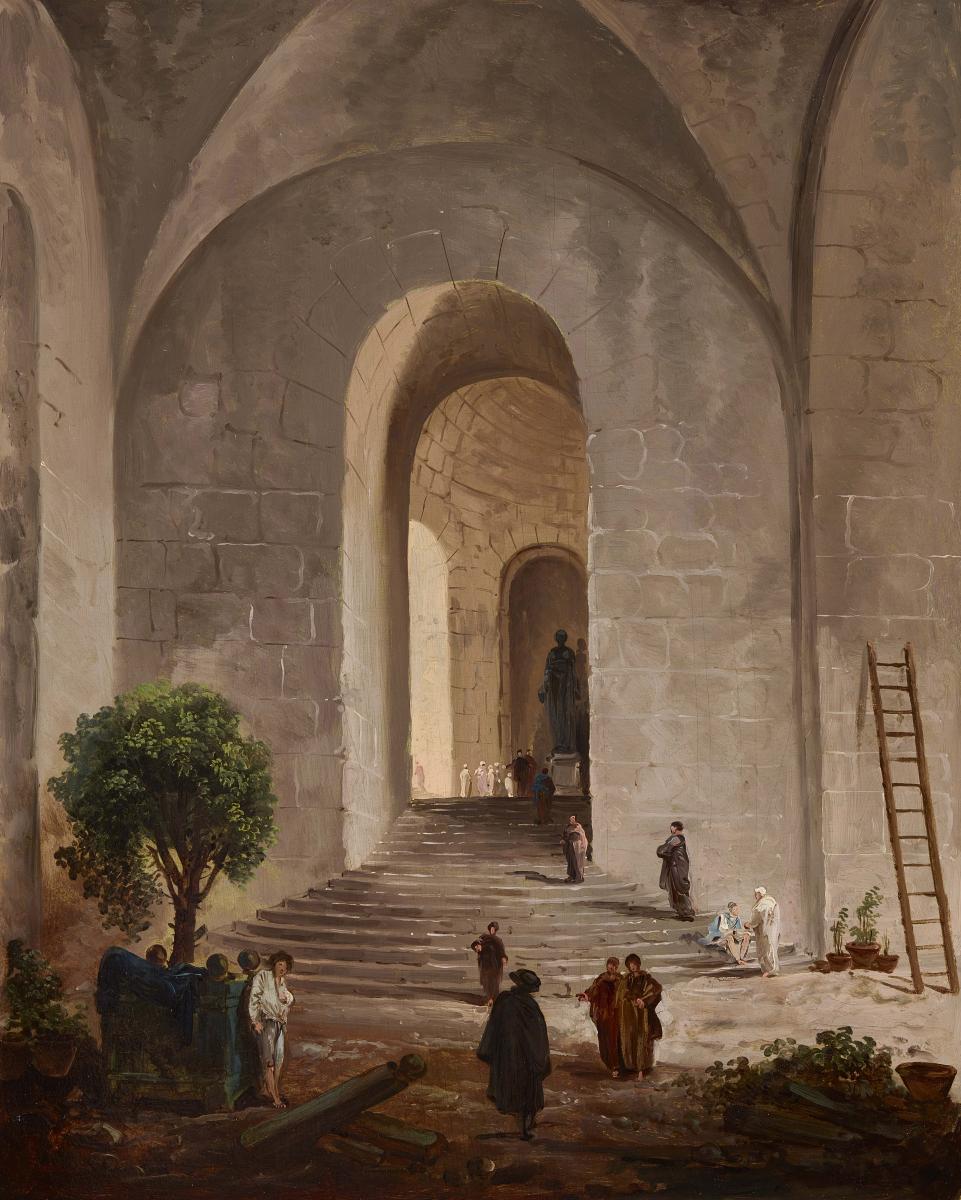
Painted by Hubert Robert in the late 18th century, this painting depicts the installation of the central nave where a statue of Isis was set up. This statue was removed from Versailles during the French Revolution as it was part of Louis XIV's private collections.
©Château de Versailles, Dist. RMN / © Christophe Fouin
Although the furniture and many of the works of art had been removed, the palace continued to be an attraction, with guided tours still being organised. In any case, it was not totally deserted because in 1793 it was designated as a Public Repository, i.e. a place for storing and sorting all items confiscated in the Department of Seine et Oise, whether from migrants, convicts or religious institutions. It was on the basis of these seizures and whatever had not yet left the palace that the project was launched in 1794 to establish a museum, which, after a somewhat chaotic installation period, opened in 1796.
A science room covering natural history and physical sciences was set up on the ground floor of the North Wing, while a library was established on the ground floor of the South Wing. The State Apartments and the Queen's Apartments were used to display paintings, as well as vases and other collectibles, which were placed on marble tables.
This last section underwent considerable change, becoming, in 1797, the Special Museum of the French School. Dedicated solely to French painters past and present, it entailed a further exchange of works between the Paris museums and Versailles, with the latter having to relinquish paintings and antiques it still held from foreign schools in return for paintings and sculptures by French artists. This short-lived museum, which opened in 1801 only to close its doors again in 1803, helped make the connection between the paintings hanging on the walls and the painted ceilings in the apartments.
Other areas were also given over to the arts as, at the same time, the Comédie-Française took over Marie-Antoinette’s former theatre, featuring designs by Hubert Robert, in the Gabriel Wing.
The 19th century
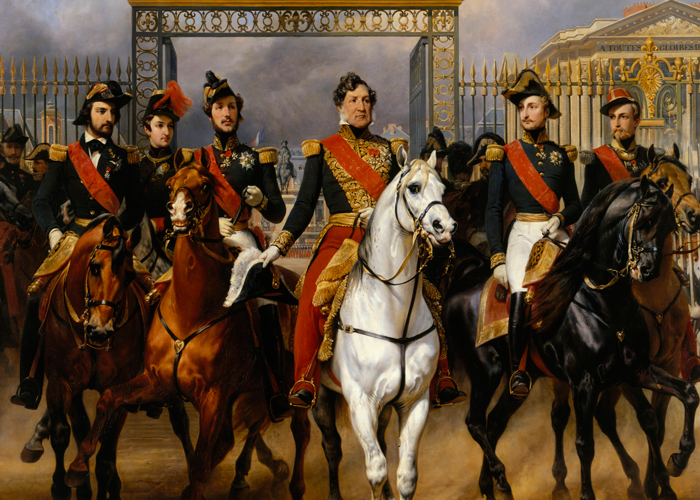
The court left Versailles in October 1789 for Paris. It would never return. Well aware of the Palace’s image, Napoleon chose not to settle here, but opted instead for Trianon, which was more modest. Pope Pius VII visited it in 1805, but it was not until the accession to the throne of Louis-Philippe as “King of the French” in 1830 that Versailles was really brought back to life. Like the members of his family – the Orléans – the new sovereign of the July Monarchy was keenly interested in history. By deciding in 1833 to create a museum “dedicated to all the glories of France”, the monarch sought to reforge a bond among the French people, from the legitimist monarchists to the revolutionaries, and from the supporters of Napoleon to the liberals. Opening in 1837, the museum celebrated glorious events in the history of France from the Middle Ages to the start of the July Monarchy.
Find out more about the 19th Century
The king of the French wanted to be a reconciler; the major works he undertook in the Palace did away with former court spaces, but saved the building itself. The refurbishment continued after his departure, and Napoleon III went on to use the Palace as a venue for celebrations and to represent his power. Here he received Queen Victoria for a sumptuous stay in 1855. The Palace had become an archetypal seat of power and continued to host the most important events in the history of France, such as the declaration of the German Empire, signed in 1871 following France's defeat at war by the Prussians. The Palace took a long time to recover... Similarly, the Third Republic was born in Versailles, as the Parliament took refuge here after the Commune. Between 1873 and 1954 fifteen presidential elections were voted on by Parliament meeting in Versailles. The arrival of a young curatorial assistant in 1887, and his subsequent appointment as curator in 1892, enabled the Palace to showcase its former role as royal residence. Pierre de Nolhac began to restore Versailles’ character as a royal residence and to reorganise the collections of Louis-Philippe’s museum. During the horrors of the First World War, Versailles suffered anew.
Today

The beginning of the 20th century was marked by the First World War, and Versailles also suffered during this conflict which forced the Palace to close and its works to be protected. But, like Paris, Versailles was not invaded and, all in all, life continued. Even though at a slower rhythm, the museum collections grew and visitors arrived, though fewer than before. The Palace spent the war years mobilising support for the national effort and assisting the wounded and the families of soldiers as much as possible. When it was chosen for the signing of the peace treaty in 1919, Versailles once again became the centre of the world's attention. Recalling the humiliation of 1871, the Allies had the Germans sign in the same place where the German Empire had been declared... Despite this resurgence of attention, the Palace suffered a lack of maintenance for several years, due to a crippling shortage of money to renovate it, and it began to show its age. Salvation came from across the Atlantic in the person of the billionaire John D. Rockefeller, who made two enormous donations to the Palace for its restoration. Recalling the involvement of France in the American War of Independence, the wealthy businessman inaugurated a custom of philanthropy and patronage that became indispensable for the proper functioning of the site.
Find out more about Versailles today
Following in the footsteps of Pierre de Nolhac, who left in 1920, the Palace’s curators dedicated themselves to refurnishing the rooms, and sought out the furnishings that had been scattered during the great Revolutionary rummage sales of 1793. During this same period, thanks to Sacha Guitry and his film Royal Affairs in Versailles, Versailles regained popularity with the general public, solidly backed by the new head curator, Gérald Van der Kemp, a veritable ambassador to the whole world for the monument. Thanks to him, Versailles regained its cosmopolitan character, and the entire political, artistic and cultural world rushed to tour it. The government understood the interest it could derive from such a venue, and official visits – John and Jackie Kennedy, Boris Yeltsin, Queen Elizabeth II and Jimmy Carter – all restored the lustre to Versailles, which also hosted the G7 summit in 1982 at the request of François Mitterrand.
The terrible storm of 1999 devastated the park of Versailles – 10,000 trees were lost and the damage was estimated at 250 million francs – but nevertheless allowed the possibility of restoring it to its original condition to be considered once again; the project had been started ten years earlier, after another storm, but had run up against resistance. The idea received fresh support from an international subscription launched in January 2000. Gradually the gardens were replanted, in particular with the aim of restoring Le Nôtre’s original layout. Following this immense task, Petit Parc groves such as the Girandole, the Dauphin’s and Three Fountains Groves were reopened, and the Water Theatre Grove was renovated in 2015 with a contemporary reinterpretation designed by Landscape Designer Louis Benech and Artist Jean-Michel Othoniel.
The Palace itself also required extensive restoration work, and improvements for the reception of the public were essential. A blueprint called “Le Grand Versailles” was launched in 2003 and renewed in 2011. The projects notably included restoration of the Hall of Mirrors, the Petit Trianon, the roofs on the central section of the palace and the Royal Gate, alongside major works for security and modernisation which are less visible. Further down from the Palace, the Grand Commun now concentrates all the energy facilities necessary for the proper functioning of the palace’s technical installations, while also providing space for all the staff members.
Concerning the reception of the public, Parliament returned to the Palace a large number of spaces, in particular in the north and south Ministers’ Wings, and the Dufour Pavilion was opened in February 2016, after spectacular renovations by Dominique Perrault. The pavilion now constitutes the Palace's new main entrance.
All kinds of major exhibitions and guided tours are now available to visitors during their journey of discovery through this major historical site. Numerous events are organised in the Royal Chapel, the Royal Opera House and the Equestrian Academy of Versailles, while the Musical Fountains Shows bring the parterres and groves in the Garden to life each year to the sound of baroque music.
The Palace of Versailles is duty-bound to remain faithful to its vocation of supporting artistic creation since its beginning and preserving some of the finest works by the most gifted painters, sculptors and craftsmen of the time. This is why, every summer since 2008, it has hosted the work of a famous contemporary artist.
Jeff Koons, followed by Xavier Veilhan, Giuseppe Penone, Lee Ufan, Anish Kapoor and Olafur Eliasson have all installed works of art on site and encouraged visitors to look at the Palace with a fresh perspective. Versailles has always been a centre for artistic creation, as testified by the richness of the collections commissioned over the centuries, and, ever faithful to this vocation, the estate welcomes a different contemporary artist every summer.
Back to
The Palace of Versailles, a living place




